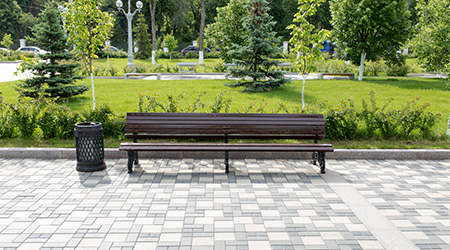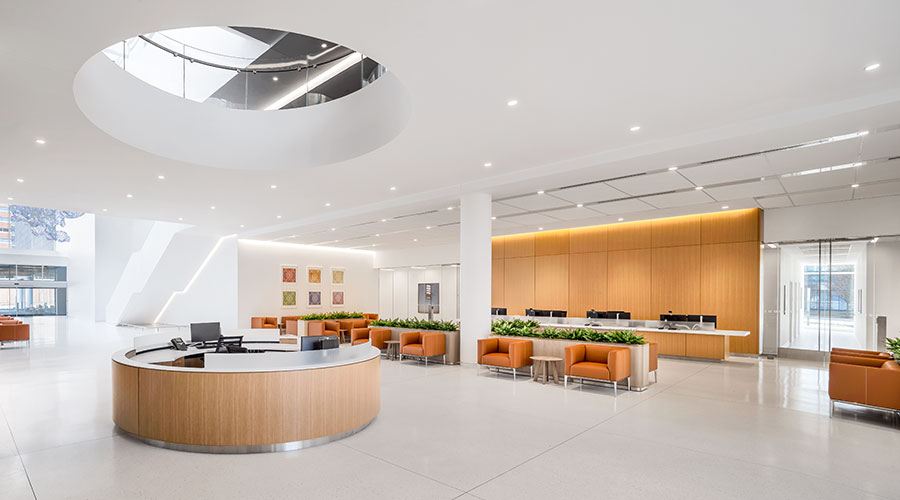Hardscapes often do not get much attention or respect. These components of facility campuses can be easy to overlook during the planning phase of a project, and they are even easier to neglect when it comes to routine inspection and maintenance.
In many organizations, hardscapes have been regarded only as needed infrastructure — paths to lead pedestrians, lights for safety and walls for soil containment. This approach has changed in recent years, allowing for unique opportunities. Pavement can be permeable to allow water infiltration, lighting used for safety and aesthetic purposes can incorporate LED technology to reduce power use and walls can mimic natural materials or sustainably use construction waste and recycled materials.
For grounds managers and others involved in healthcare facility construction and upgrade projects who take the time to consider hardscapes during the planning phase, the upside can be substantial. They can realize benefits related to sustainability, performance and aesthetics, and they can prevent long-term costs related to hardscape maintenance.
For Jeff Lewis, director of maintenance with UPMC Shadyside hospital in Pittsburgh, hardscapes represent a substantial portion of his department’s workload. The UPMC network includes 40 hospitals and 800 clinical facilities throughout the region.
Wells says the system’s hardscapes include “miles of access drives, tens of thousands of parking spaces, millions of square feet of walks and patios, hundreds of thousands of square face feet of retaining walls, thousands of light fixtures, and countless pieces of site furniture.”
Proper hardscape selection and management are important parts of a high-quality landscape, but one unique challenge of successful management stems from the need for maintenance and repairs, coupled with the 24/7/365 nature of healthcare facilities’ operations.
Wells says recent hardscape projects around UPMC facilities have included “everything from parking deck and walkway repairs at Montefiore Hospital to eliminate water leaking issues to (projects at) medical offices, hospitals and other facilities. Hardscape repairs and improvements are an ongoing undertaking.”
The priority for Wells and his team is to ensure the work does not disrupt facility operations.
"The key challenge is a need to keep our facilities open and safe during all construction, maintenance, and weather conditions,” Wells says. “This requires significant coordination between our design professionals and individual facility management. The same can be said about our more public gathering spaces, such as meditation gardens, patios, and plazas.
“Whether constructed from concrete or pavers, with or without site furniture, when each is in need of upgrade or repairs, said tasks must be completed while the rest of the facility continues to function.”
Dan Hounsell is senior editor for the facilities market. He has more than 25 years of experience covering engineering, maintenance, and grounds management issues in institutional and commercial facilities.

 Should We Be Testing Toilet Water in Patient Restrooms?
Should We Be Testing Toilet Water in Patient Restrooms? Healthcare Union Petitions for Increased Staff Safety at HCA Florida Hospitals
Healthcare Union Petitions for Increased Staff Safety at HCA Florida Hospitals HGA Announces Completion of the Jeffrey and Patricia Cole Pavilion
HGA Announces Completion of the Jeffrey and Patricia Cole Pavilion Healthcare Facilities Look to Future-Proof Facilities
Healthcare Facilities Look to Future-Proof Facilities Yale New Haven Health Experiences Data Breach
Yale New Haven Health Experiences Data Breach